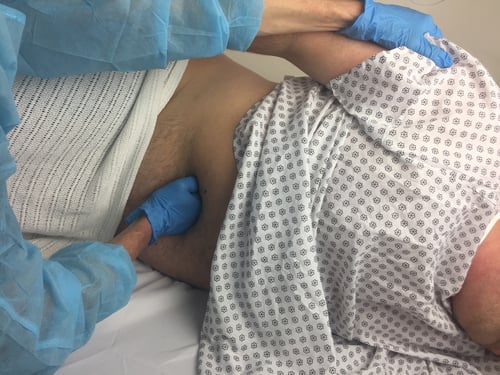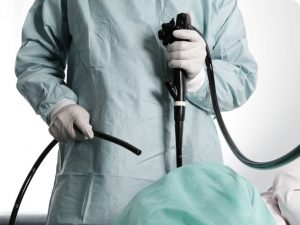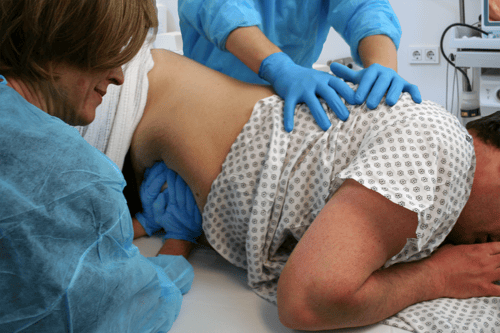Difficult Colonoscopy
A difficult colonoscopy is one “in which the endoscopist has trouble getting through the entire colon or fails to do so,” according to Dr. Jerome Waye. An estimated 10 to 20 percent of colonoscopies are considered difficult. 80 percent of these are due to looping as a result of a torturous or redundant colon, and 20 percent can be attributed to a fixated / angulated sigmoid colon and / or strictures. Difficult colonoscopies are problematic because they either result in longer-than-expected procedure times (and a lot of aggravation) or incomplete procedures.

Resources
- Anatomic Factors Predictive of Incomplete Colonoscopy Based on Findings at CT Colonography - article in American Journal of Roentgenology
- The Difficult Colonoscopy - article from the Canadian Journal of Gastroenterology
- The Difficult Colonoscopy - interview with Jerome Waye in the journal Gastroenterology & Hepatology
- Factors associated with incomplete colonoscopy: a population-based study - article in Gastroenterology
- Mechanical analysis of insertion problems and pain during colonoscopy - article in the Canadian Journal of Gastroenterology
- What Is a Difficult Colonoscopy? - blog post that summarizes the issue and suggestions solutions
Looping
In difficult colonoscopies, looping is a frequent challenge. It occurs when the colonoscope stretches and distends the colon in response to the physician’s efforts to advance the scope. Looping is most common in the sigmoid colon, although it can occur anywhere the scope encounters a barrier.
Looping Resources
- Detection of Looping During Colonoscopy Using Bending Sensors - article in The Open Medical Devices Journal
- Looping Formation During Colonoscopy: A Simulation - presentation at the 14th International Users Conference (also, see companion video.)
- Magnetic imaging of colonoscopy: an audit of looping, accuracy and ancillary maneuvers - article in Gastrointestinal Endoscopy
Because looping increases discomfort and lengthens the procedure, it can result in prolonged exposure to higher levels of anesthesia. Therefore, there is a strong incentive to mitigate it as much as possible. Along with physician scoping techniques, the best way to address looping is to apply counter-pressure to the patient’s lower abdomen to “splint the colon” (i.e., hold it in place).

Resources on Scoping Techniques
- The Difficult Colonoscopy: Tips and Tricks - PowerPoint Presentation from LSGE Congress
- Redefining ‘Difficult’ Colonoscopy: Tips on Tackling the Challenge - article in Gastroenterology & Endoscopy News
- Techniques for difficult colonoscopies, preparation - video excerpt
Endoscopist Injury
Unfortunately, the physical maneuvers required for advanced scoping techniques can leave endoscopists in pain, or worse yet, injured. A review of current literature found that musculoskeletal complaints are extremely common among GIs; the incidence of pain and injuries ranges from 29% up to 89%.
Resources on Endoscopist Injury
- Endoscopist Injury: Scope with Care - a blog post that highlights the causes and frequency of injuries among GIs
- Prevalence and risk factors for musculoskeletal injuries related to endoscopy - article in Gastrointestinal Endoscopy
-
Review of musculoskeletal injuries and prevention in the endoscopy practitioner - article in Journal of Clinical Gastroenterology
Adenoma Detection Rate
Of course, the goal of colonoscopy is to reach the cecum so that the colon can be thoroughly examined and any polyps can be removed. Difficult colonoscopies threaten this goal and can result in an incomplete procedures and / or compromised ADR.
Resources on ADR
- The association between cecal insertion time and colorectal neoplasm detection - article in BMC Gastroenterology
- Polyp and adenoma detection rates in the proximal and distal colon - article in American Journal of Gastroenterology
- Prolonged cecal insertion time is associated with decreased adenoma detection - article in Digestive Diseases and Sciences
Abdominal Pressure in Colonoscopy
To eliminate looping and help the doctor advance the scope, endoscopy nurses and staff routinely apply abdominal pressure in roughly 60% of colonoscopies. If manual pressure doesn’t work, patients are typically repositioned onto other side or onto their stomach. Quality educational materials and best practices for applying manual pressure have undoubtedly enhanced the safety and efficacy of these practices. Yet sometimes, there is just no safe way for these techniques to be performed. As a result, strains and injuries are still quite common among endoscopy nurses and staff.

Resources on Abdominal Pressure during Colonoscopy
- Safe and Effective Abdominal Pressure During Colonoscopy - article in Gastroenterology Nursing
- The importance of abdominal pressure during colonoscopy: techniques to assist the physician and to minimize injury to the patient and assistant - article in Gastroenterology Nursing
- Observational study of the frequency of use and perceived usefulness of ancillary manoeuvres to facilitate colonoscopy completion - article in Digestive & Liver Disease
- Techniques for difficult colonoscopies - a video excerpt


